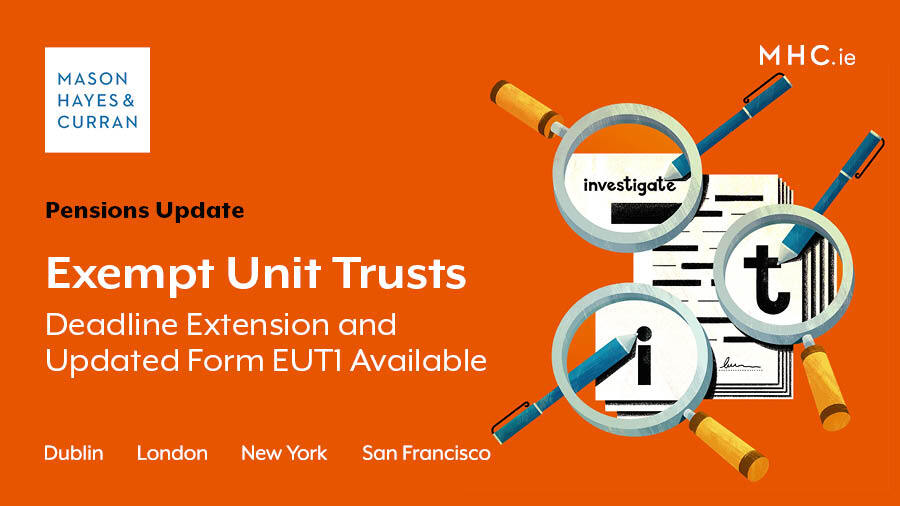
The Taxes Consolidation Act 1997, in particular section 731 (5), provides for the taxation of certain unit trusts, commonly referred to as Exempt Unit Trusts, or EUTs. Trustees of EUTs, or persons authorised to act on their behalf, must return a Form EUT1 to the Revenue for each year of assessment. This year, Revenue have published an updated version of the form and though the filing deadline has been extended to 5 May 2023, the additional information requirements in the new EUT1 are proving to be contentious.
What does Form EUT1 require?
The EUT1 contains a declaration that must be completed by the trustee or authorised persons confirming that the EUT meets the conditions to avail of the tax exemption contained in section 731(5) of the Tax Consolidation Act 1997. In addition, the form also requires the disclosure of the nature of assets held by the EUT during the year of assessment.
Important for pensions providers
Revenue have recently published an updated version of this form which requires the provision of a range of new information. For pension providers that operate an EUT this change will not have been anticipated. It is likely to prove very difficult for many to include the additional information on the EUT1. We are aware a large representative organisation for pension providers is contacting Revenue with the aim of setting up a meeting to discuss the updated EUT1 and the additional information requested.
The EUT1 now includes the following additional panels:
- Disclosure of unitholder type (i.e. state if either a pension or a charity)
- General overview of business activities carried out by the EUT in the year of assessment
- Details of any material transactions carried out by the EUT in the year of assessment
- Details of any transactions entered into with persons connected with any unit holder in the EUT in the year of assessment, and
- Disclosure of assets held by the EUT at end of year of assessment, which includes disclosure of asset type, location and value
Conclusion
Many pension providers operate an EUT and use it primarily as a means of ring-fencing certain assets within a pension’s portfolio. Property assets where gearing is incurred by the relevant EUT sub fund is a common example. The changes made to the EUT1 have not been anticipated and it may be very difficult for providers to collate and provide the additional information to Revenue.
For further information on EUTs or on the updated Form EUT1, contact a member of our Pensions team.
The content of this article is provided for information purposes only and does not constitute legal or other advice.
Share this:






